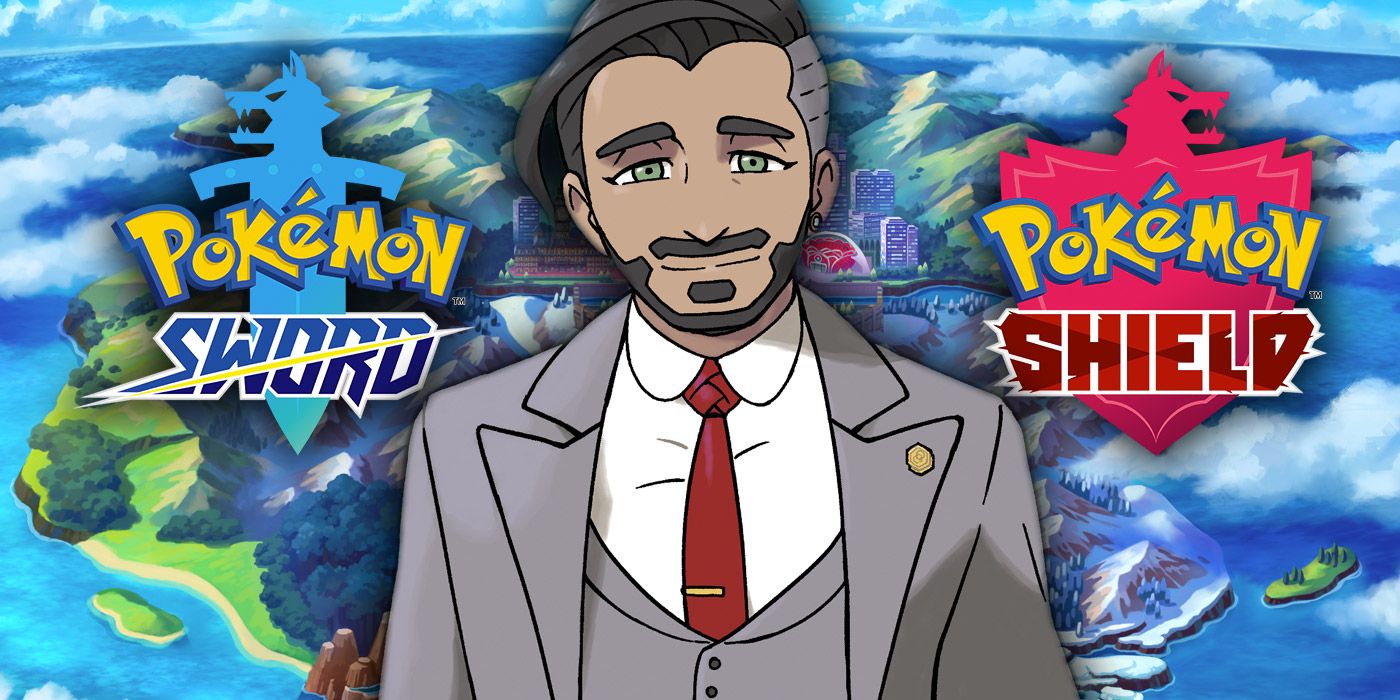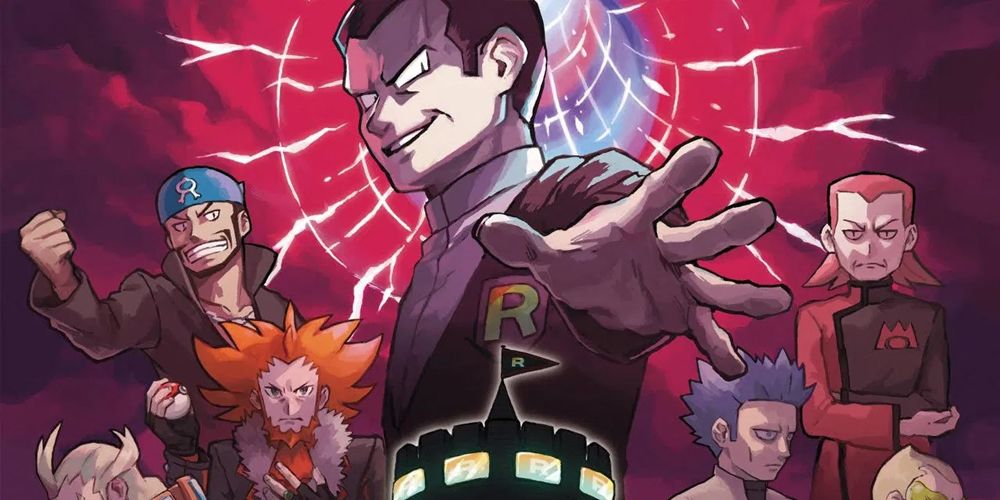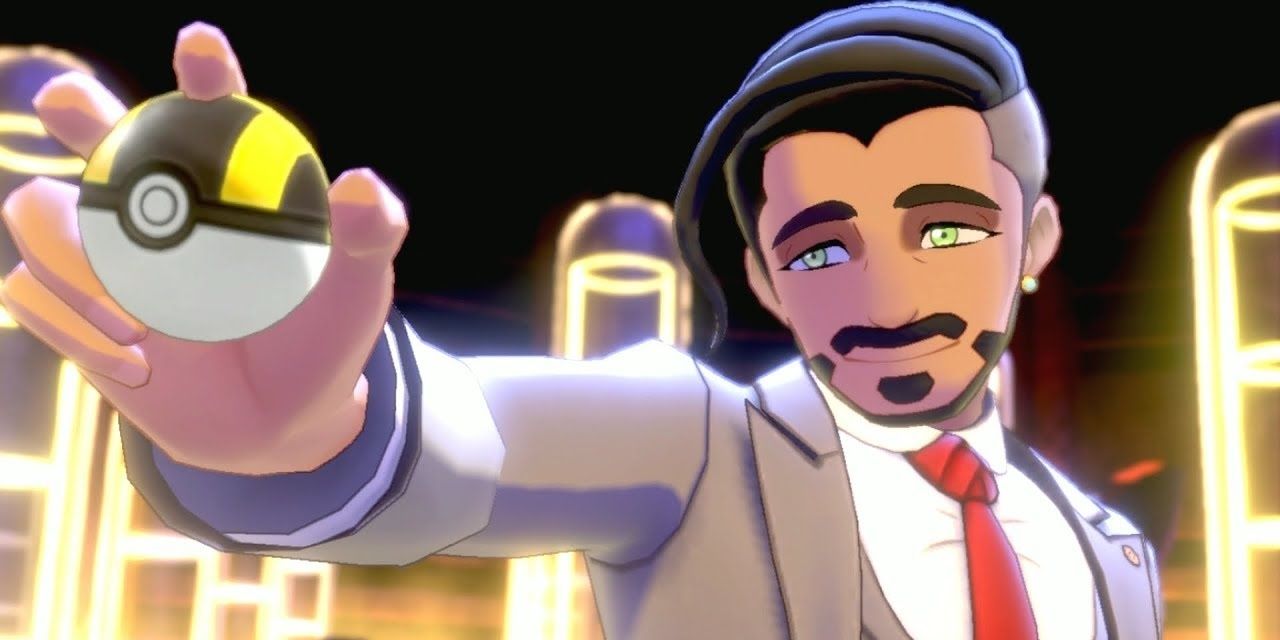Great stories are made better by great villains. The best antagonists in fiction typically fit one of two molds, be they a character everyone loves to hate for their fun, despicable nature; or a character with a relatable, sympathetic backstory that opens audiences to a new point of view. JRPGs like Final Fantasy have a long history of using bombastic villains, and the Pokemon franchise is no exception. However, the latest entries Pokemon Sword and Shield faltered in this regard.
The core of Pokemon video games are their titular monster collecting. Each new Generation introduces a bevy of creatures to capture, and these Pokemon set the stage for every other element. Players are encouraged to bond with their Pokemon partners in a modern-fantasy world built around its history with these powerful monsters, and a hierarchal power structure exists around the Gym Leaders, Elite Four, and Champions who have mastered forming these bonds.
Pokemon Sword and Shield did something unique in that the typical Pokemon League structure was altered to reflect real-world sports. The games' ultimate antagonist was Chairman Rose, the head of this League and seeming arbiter of all things in the Galar Region. However, rather than capitalizing on this unique starting point, Game Freak seemingly just recycled one of its most recent archetypes, creating one of the least engaging antagonists in its series. Generation 9 needs to do better, and looking at previous Pokemon villains may offer some perspective into how.
A Brief History of Pokemon Villains
The tradition of having an overarching "evil team" that meddles with players' adventures began in Pokemon Red, Blue, and Green with Team Rocket. Thanks to auxiliary media like the Pokemon anime and Niantic's AR mobile game Pokemon GO, this group of gangsters and Pokemon thieves are likely as recognizable as tenets of the brand such as Pikachu.
However, in the video game canon, Team Rocket plays more of a subdued role. Throughout the Kanto Region, players encounter Team Rocket members attempting to strongarm people in different cities and use gambling hubs as cover for their other unsavory deeds. One big twist is that Team Rocket's leader Giovanni, whom the player battles a handful of times, is also the final Kanto Gym Leader. Generation 2 brings Team Rocket back to Johto with the purpose of finding Giovanni to reunite the organization, and the leader is given further import in HeartGold and SoulSilver when a special event reveals he is the father of rival character Silver.
After Team Rocket came the dual Teams Magma and Aqua in Pokemon Ruby and Sapphire. Their leaders, Maxie and Archie, had diametrically opposed goals of expanding the land or the sea, and they were the first to use Legendary Pokemon to attain these goals. The rivalry between these groups is played more comedic, but fan-favorite Pokemon Diamond, Pearl, and Platinum's Team Galactic Boss Cyrus is decisively more sinister. His ultimate goal is to use the Sinnoh Legendaries to wipe out all of existence and start a new universe bereft of spirit, and he doesn't seem to care what becomes of his subordinates in the process.
The following villains had a tough act to follow, and some may argue the series peaked with Cyrus. Ghetsis, the head of Pokemon Black and White's Team Plasma, is essentially a religious zealot in the original games who is overshadowed by N, his adoptive son whom he aims to make a puppet ruler of the Unova Region. In Black 2 and White 2, that ambition is done away for a simple 'destroy everything with a fused version of Kyurem' plan.
Pokemon X and Y are a considerable step down, as billionaire tech mogul Lysandre's plotline culminates with him using an ancient weapon to kill everyone not part of Team Flare. The team is comprised of only the rich and beautiful, as they all desire a more "beautiful" world overall, but at the end it is Team Flare that is consumed by the weapon.
Pokemon Sun and Moon picked things up with the twist that Guzma and Team Skull were not the game's true villains, rather they were ne'er-do-wells hired by Aether Foundation President Lusamine to help facilitate her dream of expanding its care to dangerous, interdimensional beings called Ultra Beasts. Part of the reason this plot works is because it becomes an intimate family story by the end. Lusamine's children have to pull her back from the brink of insanity, despite working through the abuse she dolled out while succumbing to her mad ambitions.
The Failings of Chairman Rose
In Pokemon Sword and Shield, the developers offer a meager attempt to convince players that Team Yell are the villains, as they mess with competitors aiming for the Pokemon League Champion slot in order to help rival character Marnie win. However, it's revealed that these were just members of the Spikemuth Pokemon Gym sent out by Marnie's overprotective brother Piers, leaving no evil team to fill the void.
That is, until it turns out a sinister sect of Chairman Rose's company, Macro Cosmos, is helping him try to awaken the Legendary Pokemon Eternatus to reenact a historic event known as the "Darkest Day." Apparently, Rose believed that the Galar Region would run out of energy some 1,000 years into the future, and hoped to use Eternatus' energy to power his homeland forever.
Two things stand out when trying to discuss Chairman Rose in Sword and Shield. First, the fact that his self-deluded "protect the world, consequences-be-damned" plot is hidden behind the innocuous smokescreen of a lesser team is a near direct copy/paste of Lusamine from the previous Generation. However, unlike Lusamine, Rose has no real personal stakes in such a story, and his ambitions come almost completely out of nowhere in the 11th hour. Even with a little more characterization in the Pokemon Twilight Wings short series, it's hard to see why this group is so keen to follow the Chairman's plan.
Another particularly silly thing about Sword and Shield's villain is that his uninspired ulterior motive clashes with an otherwise perfect set-up. Unlike every other villain in the history of Pokemon, Chairman Rose is already in charge at the beginning, inextricably linked with the Pokemon League - which stands out compared to other titles for the sheer spectacle of its Dynamax Pokemon battles. This could have offered him a more specific, memorable aim than solving a nebulous future issue.
The ingredients were there for something like a sports tampering narrative that could have provided commentary on real-world events. Perhaps this was avoided to keep Rose's prized Champion Leon a more pure character, but the obvious intrigue falters as a result. A more greedy and sinister last stand to keep his ill-gained power over the Region would also much better fit his intense and gothic battle theme - complete with a haunting choir.
On the bright side, it could be argued that Game Freak may have just taken things easy for its transition to a home console game. Pokemon X and Y were the first titles to transition into 3D, and their Team Flare was followed up by a stronger villain narrative in Sun and Moon. Many in the community seem to find Sword and Shield's DLC expansions more vibrant than the base game, in spite of their smaller scope. Hopefully, the next entry in the series pulls from its successful past with characters like Giovanni, Cyrus, and Lusamine to develop a new villain with a greater connection to their Region and more time to express their goals.
Pokemon Sword and Shield are available now on Nintendo Switch.



